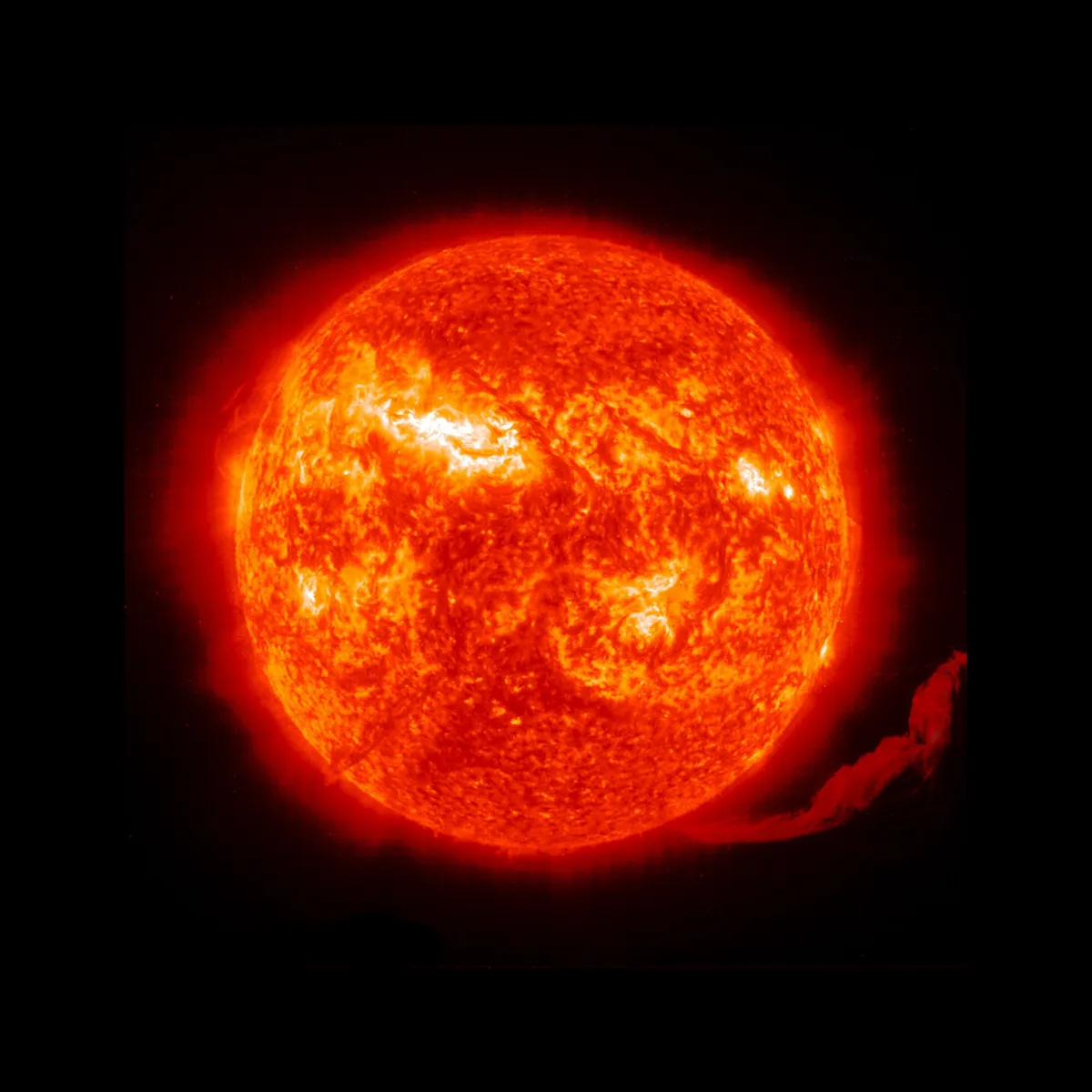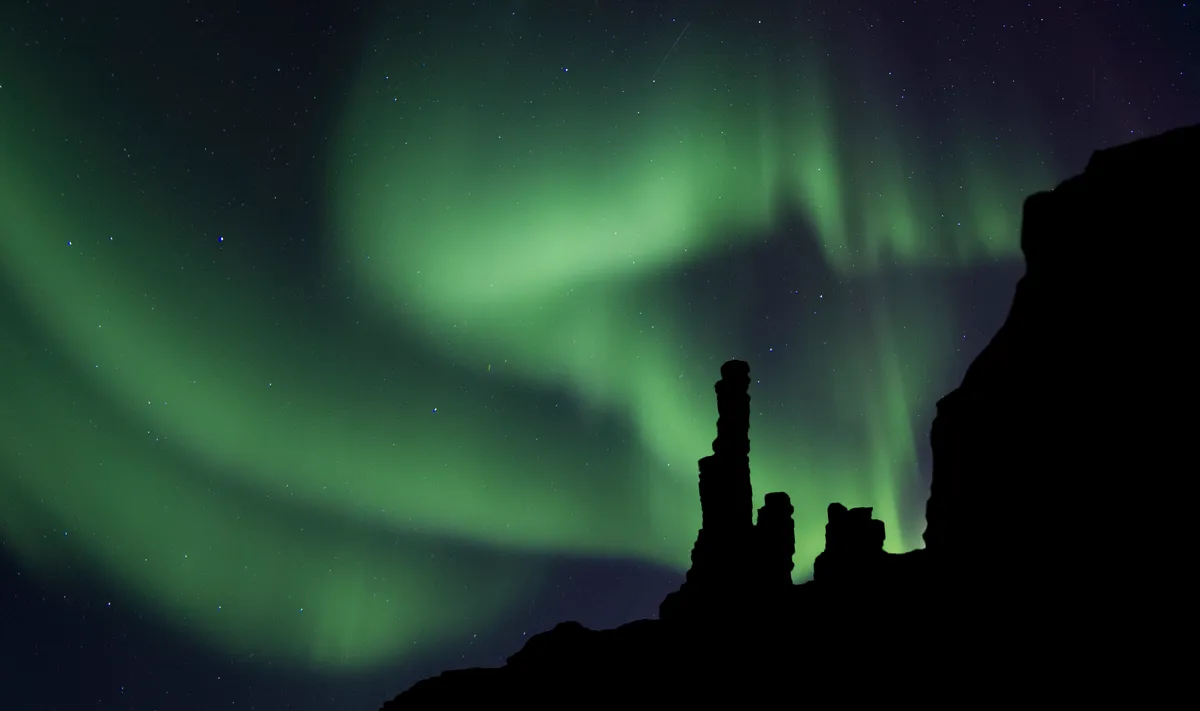As Britain glows with glorious spectral illuminations across the night sky, ranging as far south as Cornwall, we look at the extraordinary phenomenon of the Northern Lights, aka Aurora Borealis.
If you have captured any recent images of the Northern Lights that you would like to share with us, email your pictures to photos@countryfile.com or tag your social media post with #BBCCountryfileMagPOTD.
An awe-inspiring Aurora Borealis (Northern lights) display was seen across Britain on Sunday night. People got a second chance to see the spectacular shifting display of green, pink and blue light on a cloud-free night on Monday 26 February, when Alexander Herries took these gorgeous images from his home in Crieff, Perth and Kinross.

Interested in other celestial events? Check out our guide to sky gazing.
What are the Northern Lights?
The Northern Lights are a spectacular natural show of glowing greens, blues, violets, yellows and sometimes reds seen in the night sky.
Scientists call this celestial wonder the aurora borealis.
The same light phenomenon van also be seen in the southern hemisphere, where it is known as the aurora australis.

What causes the Northern Lights?
This aurora is the result of a solar storm. That occurs when eruptions on the sun cause a rapid release of charged solar particles from the sun’s atmosphere. This release of particles is known as a solar wind.
Thrust from the sun, the solar particles shower onto the earth’s upper atmosphere, where the earth’s magnetic field propels them towards the north and south poles. There, the solar particles collide with gas particles in the Earth’s upper atmosphere, releasing energy in the form of light. Collisions between different gases result in different coloured lights.
Solar storms are a normal occurrence, but when activity on the Sun is particularly violent, the light show is more spectacular – and at these times you have a better chance of seeing the northern lights at more southerly latitudes.

Where are the best places in the UK to see the Northern Lights?
The aurora has been witnessed as far south as Cornwall, as recently as February 2023.
But you're better off heading in the other direction. The closer you go to the Arctic, the better your chance of seeing the Northern Lights – they are more frequently seen in Scotland, Northern Ireland and the north of England than in Wales or the south of England.
Light pollution often obscures the northern lights, so head to a Dark Sky Site to be in with the best chance.
There are 10 official Dark Sky sites in the UK. that are all great places to star-gaze, but to see the Northern Lights – as we’ve established – the most northerly are your best bet. These include Northumberland National Park, Galloway Forest Park and the Cairngorms.
Other UK sites are also known to be particularly good places to watch the Northern Lights. Here are a few:
- Holy Island and the Northumberland Coast AONB
- Lerwick, Shetland
- Yorkshire Dales, including Tan Hill
- The Lake District, including Derwentwater
- The Antrim coast – where favourite spots include the Giants Causeway and Dunluce Castle

Tips for watching the northern lights
To maximise your chances of seeing the aurora borealis follow these simple tips:
- Remember the weather. A cloudy night will completely ruin a display, so check the weather forecast regularly.
- Try to go to an open, rural area – you need a clear view of the sky, unobstructed by buildings, and where there is less light pollution from houses or industry
- Orientation is important. Make sure you can see the northern horizon.
- You’re most likely to see the northern lights between 10pm and 2am. However, if this is past your bedtime, then there is still a chance that you might catch a glimpse earlier in the evening, or if it’s still dark when you wake up in the morning.
Great – so WHEN should I look for the northern lights?
The sun is an unpredictable beast, but by monitoring any significant outbursts it is possible to get an idea of where and when a significant bout of auroral activity – such as a solar storm – will occur.
Websites such as Aurora Watch allow you to monitor the sun’s geomagnetic activity in real time and will tell you when the Northern Lights are likely to be visible from the UK.
Spaceweather.com offers ‘news and information about the sun-earth environment’.
And NASA’s Solar Dynamics Observatory is also constantly studying the sun’s activity. It is a great visual tool and can be used to predict a display of the northern lights.
But this is not an exact science. There is an element of luck in spotting a great display and the aurora changes by the second. As long as you follow these basic rules however, you certainly stand a good chance of experiencing one of nature’s most exciting events.

Find out more
Check out this guide to the Northern Lights and other aurorae from our friends at BBC Sky at Night Magazine, including fascinating science articles and stunning photographs.
Explore the skies here at countryfile.com
The top six sites for astronomy in the UK – and that’s official
More information on the six areas in the UK which, thanks to their low levels of light pollution and pristine starry skies, have been awarded Dark Sky status by The International Dark Sky Association (IDA).
And finally: some amazing images of the Northern Lights
Thanks to our Facebook follower Chris Himsworth for these stunning shots of the Northern Lights in his home county of Cumbria...




And here's another by Bernard Boyle, taken over Loch Lomond showing Ben Lomond:

• This article includes words by Kieron Allen and Paul Thornton.

